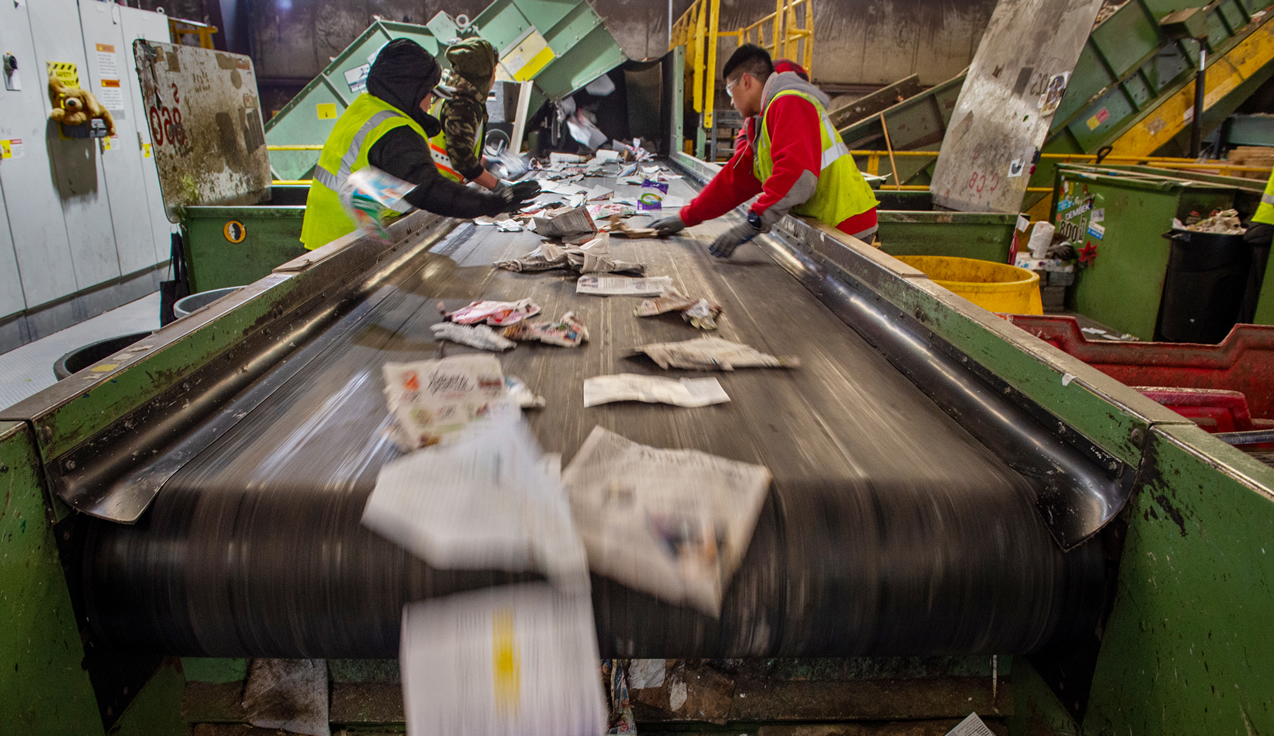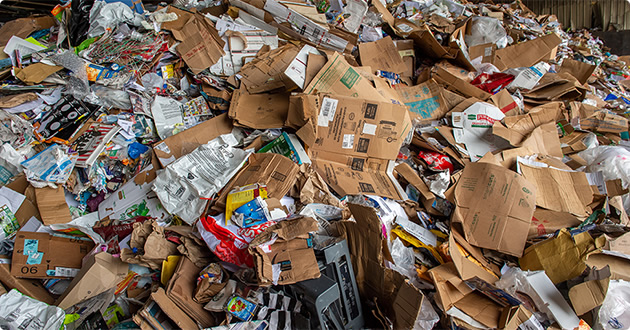Concrete Innovations Help Meet Carbon Reduction Goals
In recent years, there has been a push in architecture ......

THE CONVEYORS AT THE WILLMANTIC WASTE PAPER COMPANY snake under, over and around each other – resembling a cross between a roller coaster and a Rube Goldberg-designed highway interchange. On them are the items you put in your blue recycling bin. They clatter along, not quite drowning out the reggae playing as one of about a dozen people stationed along the line hand-sorts the items the mechanical process misses.
This is the reality of recycling in Connecticut – a state that allows residents to dump all sorts of recyclable materials into a single container only to then spend time, money and energy to have them sorted back into their original components by materials recovery facilities (MRFs – pronounced murfs) like the one in Willimantic. Only then are recyclables even potentially suitable for processing into a raw product that can be used to make new items.
Connecticut’s systems, regulations and policies supporting recycling are decades old, and the materials coming from recyclers now have limited value as commodities – that is, if they’re not so contaminated that they have no value at all and are discarded as trash.
This is the second of an ongoing series examining Connecticut’s expensive and increasingly unsustainable waste disposal system.
Read The First Part
The state has found itself at a loss, both economically and environmentally, as well as far behind its neighbors in making its recycling systems more responsive to the times. But, as with waste management overall, no two municipalities seem to handle recycling the same. And the state is generally reluctant to make changes that could cost traditional recycling jobs or spend the money to create new recycling management systems and the jobs that would come with them. There is little recognition that the economics of recycling would improve with such changes.
The problems have not gone unnoticed at the top levels of state government, including by Gov. Ned Lamont.
Legislation he submitted this session addresses the aging trash-to-energy facility in Hartford and broad waste management concepts that include specific waste reduction mandates.
In November, Speaker of the House Joe Aresimowicz, a co-sponsor of the governor’s bill, pulled together what he refers to as a Blue Ribbon Panel on Recycling. He is a one-time supporter of the state’s system of mixing all recycling together, known as single stream. “I have since changed my opinion on single stream,” he said. “Clearly we’re not headed in the right direction.”
But there has been no meeting since that first one, none is scheduled, and Gov. Ned Lamont’s bill has only one specific policy on recycling.
The state’s bottle bill went into effect in 1980. It uses a refundable nickel deposit – an amount that hasn’t gone up since it began – as incentive to recycle an array of glass, plastic and metal containers, thus keeping them out of landfills.
The rules governing the bottle bill have barely changed in 40 years, a problem that has been compounded by the beginning of Connecticut’s blue bin recycling mandate in 1991. Over time, recycling has expanded to include a number of items – most commonly glass, plastic and metal bottles, cans and containers, paper and cardboard, which used to be separated.

It is not uncommon to find items thrown in the garbage that shouldn’t be there like electronics (foreground, center) and electrical wiring (top left.)
Pushed by haulers who didn’t want to run routes twice or purchase new trucks that could accommodate two streams of recycling, everything recyclable now goes into one bin.
And that gets us to today’s problems.
“People just assumed you could put anything in them,” said Sherrill Baldwin, an environmental analyst with the Department of Energy and Environmental Protection who does recycling education and outreach.
“Wish-cycling” – when people put things in their bins they think are recyclable — is what it’s often called. A recent composition audit conducted by Willimantic for the Southeastern Connecticut Regional Resource Recovery Authority (SCRRRA) showed trash residue in recycling is up 27% from 2016 to 2019 and now accounts for nearly 17% of the total volume, up from 11% in 2016.
And the glass that people used to return through bottle deposits are ending up there too, an unintended consequence of that nickel deposit proving to be no match for the convenience of throwing glass into the blue bin.
The result: the state’s bottle bill tracking shows a steady decline in the bottle bill redemption rate – now around 50%.
For recyclers like Tom DeVivo, the third generation in the family-owned Willimantic Waste, the extra glass is the bane of their existence. Glass slices up their sorting equipment, litters the ground and contaminates all the other recycling they sort to be purchased and processed.
The contamination from glass, food, trash and other items has shifted the economics of recycling. In recent years, the biggest purchaser of U.S. recycling was China, which historically turned the separated bales of plastic, paper, cans and more into raw materials for reuse.
In recent years, there has been a push in architecture ......
Exploring other end markets for recycled glass. When people think ......